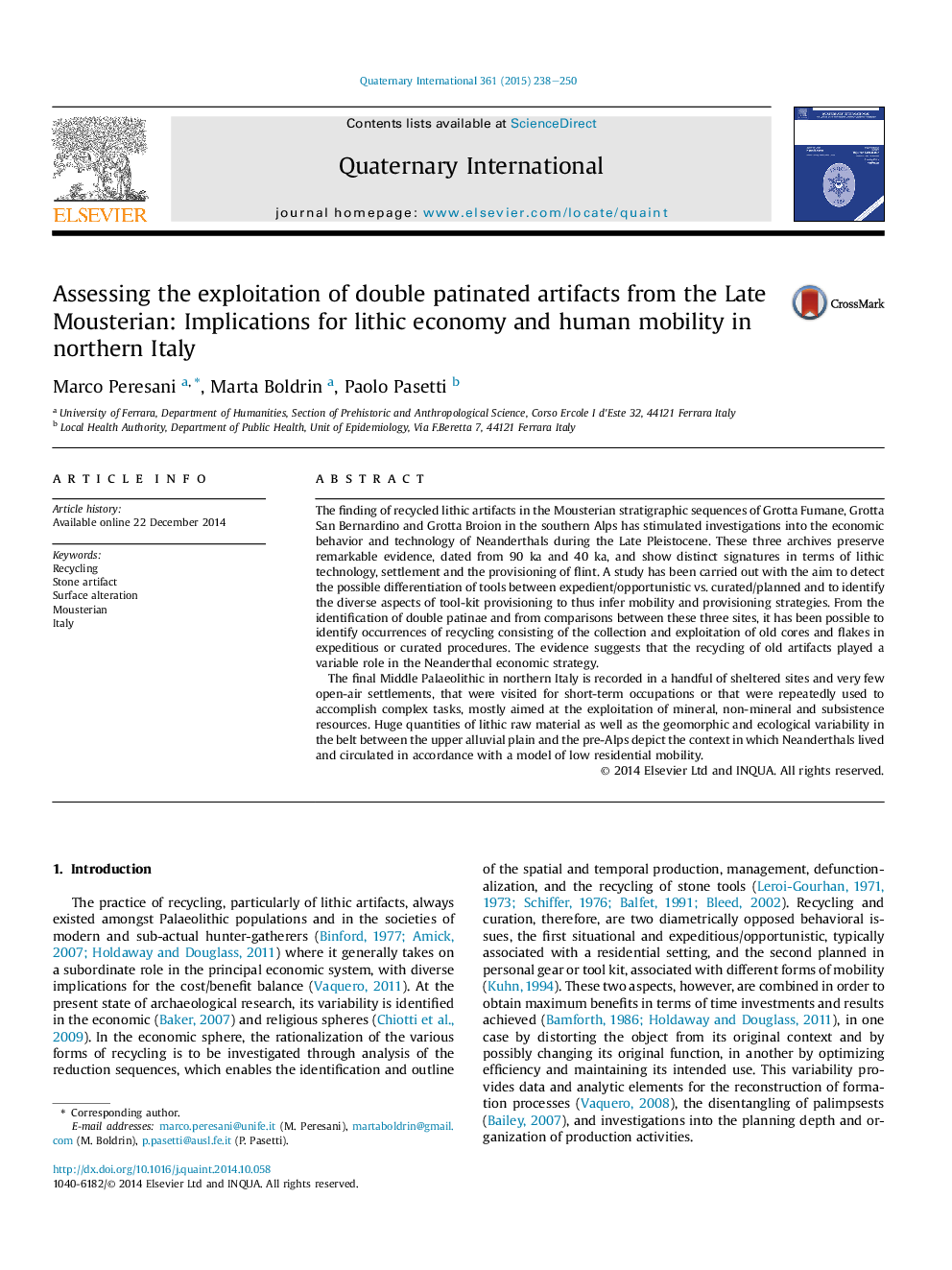| Article ID | Journal | Published Year | Pages | File Type |
|---|---|---|---|---|
| 1040935 | Quaternary International | 2015 | 13 Pages |
The finding of recycled lithic artifacts in the Mousterian stratigraphic sequences of Grotta Fumane, Grotta San Bernardino and Grotta Broion in the southern Alps has stimulated investigations into the economic behavior and technology of Neanderthals during the Late Pleistocene. These three archives preserve remarkable evidence, dated from 90 ka and 40 ka, and show distinct signatures in terms of lithic technology, settlement and the provisioning of flint. A study has been carried out with the aim to detect the possible differentiation of tools between expedient/opportunistic vs. curated/planned and to identify the diverse aspects of tool-kit provisioning to thus infer mobility and provisioning strategies. From the identification of double patinae and from comparisons between these three sites, it has been possible to identify occurrences of recycling consisting of the collection and exploitation of old cores and flakes in expeditious or curated procedures. The evidence suggests that the recycling of old artifacts played a variable role in the Neanderthal economic strategy.The final Middle Palaeolithic in northern Italy is recorded in a handful of sheltered sites and very few open-air settlements, that were visited for short-term occupations or that were repeatedly used to accomplish complex tasks, mostly aimed at the exploitation of mineral, non-mineral and subsistence resources. Huge quantities of lithic raw material as well as the geomorphic and ecological variability in the belt between the upper alluvial plain and the pre-Alps depict the context in which Neanderthals lived and circulated in accordance with a model of low residential mobility.
